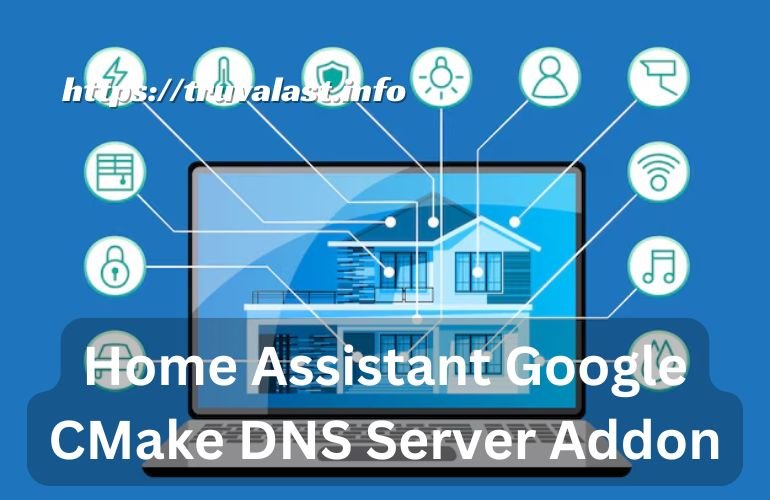Get_Ready_Bellis a real-time tool designed to help businesses better understand their customers. By gathering and analyzing feedback, it provides valuable insights into customer preferences and behaviors. This platform empowers companies to improve client satisfaction and make data-driven decisions that foster long-term success. With its user-friendly interface and powerful features, Get_Ready_Bellis an essential solution for businesses looking to stay ahead in an increasingly competitive market. Keep reading to discover how it works, the benefits it offers, and how it can be implemented in your business.
Table of Contents
Key Features of Get_Ready_Bell: Client_Pulse
Get_Ready_Bell: Client_Pulse offers several advanced features designed to enhance customer engagement and help businesses effectively manage feedback. Each feature plays a specific role in streamlining communication and improving the overall customer experience. Here’s a closer look at the key elements that set it apart:
1. User-Friendly Interface
The interface is intuitive and easy to navigate, allowing users to quickly access essential tools and insights. This simplicity reduces the learning curve for teams and makes it easier to manage customer feedback efficiently.
2. Customization
Get_Ready_Bell: Client_Pulse provides extensive customization options, allowing businesses to tailor the platform according to their unique requirements. From personalized dashboards to tailored feedback forms, users can adjust settings to fit their specific operational needs.
3. Automation
Automation features help reduce manual workload by automatically collecting and categorizing feedback. This streamlines the process, enabling quicker response times and more efficient follow-ups with clients.
4. Analytical Capabilities
The platform’s robust analytics help users transform raw data into actionable insights. By analyzing trends, patterns, and customer behavior, businesses can make informed decisions and enhance their service offerings based on real-time feedback.
5. Real-Time Notifications
With real-time notifications, businesses stay updated on feedback as it happens. This feature helps teams address customer issues promptly, improving responsiveness and overall satisfaction.
These features collectively enhance the feedback process, allowing businesses to stay engaged with their clients and make informed decisions. Each component adds value by improving both the efficiency and effectiveness of customer interactions.
The Benefits of Using Get_Ready_Bell: Client_Pulse
Get_Ready_Bell: Client_Pulse offers a variety of benefits that help businesses enhance their customer experience and make informed decisions based on real-time data. By integrating this tool into operations, companies can address customer needs more effectively and drive sustainable growth. Below are the primary advantages:

1. Enhanced Customer Engagement
Client Pulse enables businesses to stay connected with their customers by collecting real-time feedback. This level of engagement allows companies to understand customer preferences, respond to issues quickly, and build stronger relationships. The continuous flow of feedback helps businesses remain agile and responsive, fostering trust and loyalty.
2. Proactive Issue Identification
By gathering insights from clients regularly, businesses can identify potential issues before they escalate. Early detection of problems not only improves customer satisfaction but also allows for quicker resolutions. Proactive monitoring helps prevent minor complaints from turning into larger concerns, enhancing overall customer retention.
3. Data-Driven Decision Making
Client Pulse provides a solid foundation for making informed business decisions. With access to detailed customer insights, companies can tailor their products, services, and strategies to meet evolving client needs. Data-driven decision-making reduces guesswork and increases the likelihood of positive outcomes, leading to better business performance.
4. Boosting Client Retention and Loyalty
When businesses show they value customer input, it fosters a sense of loyalty. Consistently acting on feedback ensures clients feel heard and appreciated. This personalized approach contributes to higher customer retention rates, as satisfied clients are more likely to remain loyal and recommend the business to others.
5. Driving Business Growth
Get_Ready_Bell: Client Pulse not only helps improve customer satisfaction but also supports long-term business growth. The platform allows companies to identify opportunities for improvement and expansion by understanding what clients value most. This targeted approach results in better product offerings, service improvements, and a stronger market presence.
Incorporating Get_Ready_Bell: Client_Pulse into business operations empowers organizations to make better decisions, improve customer relations, and foster sustainable growth. Each benefit contributes to creating a more efficient and customer-centric business model.
Why Client Feedback Matters and Its Importance
Client feedback is one of the most valuable resources for any business. It provides direct insight into customer experiences, preferences, and areas where improvement is needed. Understanding and acting on client feedback helps companies build stronger relationships and continuously refine their services or products to better align with customer needs. Here’s why collecting and acting on client feedback is essential:
1. Improving Customer Experience
Feedback gives businesses a clear understanding of what their customers think about their products or services. This information allows companies to address specific concerns or pain points, leading to a better customer experience. By focusing on what customers care about most, businesses can create more meaningful interactions and improve overall satisfaction.
2. Building Trust and Loyalty
When businesses actively seek and respond to feedback, it shows they are invested in the opinions and needs of their customers. This effort builds trust, as customers feel heard and valued. Over time, this fosters loyalty, with customers more likely to return and recommend the business to others based on positive experiences.
3. Identifying Areas for Improvement
Clients are often the best source of information when it comes to identifying where a company can improve. Feedback highlights both strengths and weaknesses that may not be immediately apparent to the business itself. Whether it’s a product feature that needs enhancement or customer service that requires attention, feedback helps identify actionable areas for improvement.
4. Supporting Product and Service Development
By analyzing feedback trends, businesses can identify what aspects of their products or services resonate most with customers. This information can be used to guide future product developments or service enhancements, ensuring that any updates or changes align with customer expectations. The result is a more refined and targeted offering that better serves the market.
5. Driving Competitive Advantage
Listening to customers and making improvements based on their feedback can give businesses a competitive edge. In an environment where customers have numerous options, companies that prioritize feedback and adapt to customer needs are more likely to stand out. This responsiveness can set a business apart and enhance its reputation within the industry.
Collecting client feedback isn’t just a one-time task; it’s an ongoing process that provides businesses with essential insights for growth and customer satisfaction. By continuously improving based on what customers share, companies can cultivate stronger relationships, build trust, and ensure long-term success.
Effective Strategies for Gathering and Analyzing Client Feedback
Collecting and analyzing client feedback is essential for businesses seeking to understand their customers and improve their offerings. By using the right strategies, companies can ensure they are capturing valuable insights that lead to meaningful changes. Here are several effective approaches to gather and analyze feedback effectively:
1. Surveys and Feedback Forms
Surveys are one of the most popular ways to gather client feedback. They allow businesses to ask targeted questions and collect responses quickly and easily. Well-designed feedback forms can help gather insights on specific aspects of the customer experience, from product satisfaction to customer service interactions. It’s important to keep surveys concise and focused, which encourages more participation and honest responses.
2. Customer Interviews
Speaking directly with customers through interviews provides a deeper understanding of their experiences and expectations. These conversations offer more detailed insights than surveys, as customers can elaborate on their opinions and provide context for their feedback. Structured interviews, whether conducted in person, over the phone, or through video calls, allow businesses to gather nuanced information that may not surface in written responses.
3. Focus Groups
Focus groups bring together a small group of customers to discuss their experiences with a product or service. This method provides a more interactive setting where participants can share their thoughts and discuss their views with others. Focus groups often generate rich, qualitative data as customers share their perspectives and build on each other’s feedback. This helps businesses uncover deeper insights and trends that may not be apparent from individual responses.
4. Customer Reviews
Encouraging customers to leave reviews on public platforms or company websites can be a valuable feedback source. Reviews offer unfiltered opinions that can highlight strengths and areas for improvement. Positive reviews serve as a testament to the quality of a product or service, while critical reviews provide important information that can be used to make necessary changes. Tracking these reviews regularly helps businesses stay aware of how they are perceived in the market.
5. Analyzing Feedback with Tools
Once feedback is collected, it’s important to analyze it effectively. Using tools like Get_Ready_Bell: Client_Pulse, businesses can organize responses and extract meaningful patterns from the data. Metrics such as Net Promoter Score (NPS) can be helpful in measuring overall customer satisfaction. Tools that categorize feedback by sentiment or topic also help in identifying recurring themes and prioritize areas of improvement.
6. Engaging Stakeholders with Feedback
Sharing feedback with internal teams and stakeholders is key to ensuring it is acted upon. Regularly communicating findings helps align the entire organization with customer needs. Teams can use the data to adjust strategies, improve processes, and develop solutions that directly address customer concerns. Keeping stakeholders engaged ensures that feedback isn’t just collected, but also translated into action.
7. Building a Plan for Implementing Changes
The final step in the process is to create an action plan based on the feedback analysis. This involves identifying key areas that need improvement and setting measurable goals. Regular updates and adjustments based on customer input ensure that businesses continue to evolve with client expectations. Monitoring progress and celebrating successes with the team reinforces the importance of feedback-driven changes.
By employing these strategies, businesses can effectively capture customer insights and use them to enhance their products, services, and overall customer experience. A continuous feedback loop ensures that improvements are always aligned with what clients value most.
How to Implement Get_Ready_Bell: Client_Pulse for Your Business
Implementing Get_Ready_Bell: Client_Pulse in your business involves a few structured steps that will help you maximize the platform’s potential. Whether you’re looking to gather feedback, improve customer engagement, or streamline decision-making, these steps will guide you through the process of setting up and using Client_Pulse effectively.

1. Set Clear Objectives
Before integrating Client_Pulse into your operations, it’s important to define what you aim to achieve. These objectives could range from improving customer satisfaction to enhancing product development based on client feedback. Having a clear goal will help you focus on the right metrics and features within the tool.
2. Configure the Platform to Match Your Needs
Client_Pulse is highly customizable, allowing you to adapt it to your specific business needs. Start by setting up personalized dashboards that display the metrics and data most relevant to your objectives. Tailor feedback forms to target key areas of your business, such as service quality, product performance, or customer support, ensuring that the questions you ask will provide actionable insights.
3. Train Your Team
To make the most of Client_Pulse, your team needs to be comfortable using the platform. Provide training sessions that cover key functionalities, including how to collect feedback, interpret the data, and respond to customer insights. A well-trained team will be more efficient in gathering and applying the feedback to improve customer experience.
4. Integrate with Existing Systems
For seamless operations, Client_Pulse can be integrated with your existing customer relationship management (CRM) tools, email platforms, and other relevant systems. This integration ensures that data flows smoothly between platforms, allowing you to track customer interactions and feedback all in one place. This step helps reduce manual work and keeps all relevant information readily accessible.
5. Monitor Feedback in Real-Time
One of the standout features of Client_Pulse is its real-time feedback collection. Use this functionality to stay updated on customer experiences as they happen. Real-time monitoring allows you to respond quickly to any emerging issues and track customer satisfaction levels on an ongoing basis. Set up notifications or alerts for critical feedback so you can address concerns promptly.
6. Analyze and Act on Feedback
Once feedback is collected, use the platform’s analytical tools to sort and interpret the data. Look for patterns or recurring themes, such as common issues or suggestions for improvement. Prioritize areas where customers express the most concern or interest, and use this information to make targeted adjustments. Whether it’s tweaking a product feature or improving service, the data-driven approach ensures you’re acting on feedback that will have the biggest impact.
7. Incorporate Feedback into Business Strategy
Make feedback-driven improvements a regular part of your business strategy. Use insights gained from Client_Pulse to refine your products, services, or processes. Share relevant data with stakeholders and decision-makers to align your entire team with the customer’s voice. This will help ensure that customer feedback becomes a core part of your ongoing development and growth efforts.
8. Measure the Impact
After making changes based on feedback, it’s essential to track the results. Monitor how those adjustments affect customer satisfaction, engagement, and overall business performance. Regularly reviewing the impact of feedback-driven actions helps fine-tune your approach and confirms that the feedback loop is making a positive difference.
By following these steps, you can successfully integrate Get_Ready_Bell: Client_Pulse into your business, ensuring that customer feedback is continuously collected, analyzed, and applied to improve operations and customer satisfaction.
Real-World Applications of Get_Ready_Bell: Client_Pulse
Get_Ready_Bell: Client_Pulse has proven to be valuable across various industries, helping businesses improve customer engagement, gather actionable feedback, and make informed decisions. Below are some examples of how Client_Pulse is used in different sectors to drive success.
1. E-commerce and Retail
In the fast-paced world of e-commerce and retail, customer preferences can shift rapidly. Get_Ready_Bell: Client_Pulse enables these businesses to collect real-time feedback on product offerings, website usability, and shopping experience. By understanding what customers like or dislike about their online experience, retailers can quickly adjust product inventories, optimize their websites, and enhance customer service. The tool also helps monitor post-purchase feedback, enabling businesses to address concerns related to delivery, product quality, or customer support.
2. Healthcare
In healthcare, patient feedback is crucial for improving the quality of care and overall patient experience. Hospitals and clinics use Client_Pulse to collect feedback from patients on various aspects of their services, such as wait times, communication with healthcare providers, and the quality of care received. These insights help healthcare organizations make meaningful improvements in patient care, reduce wait times, and enhance the overall patient journey. Additionally, it assists in tracking patient satisfaction, ensuring that healthcare providers stay aligned with patient needs.
3. Finance
Financial institutions use Client_Pulse to understand their clients’ needs and satisfaction with services like online banking, customer support, and financial advisory. With an ever-growing focus on digital transformation, feedback on mobile apps and online platforms is essential for improving user experience. Banks and financial firms rely on this tool to detect areas where clients might face difficulties, ensuring smoother interactions and more personalized financial services. Client feedback also supports compliance and regulatory efforts by highlighting areas of concern.
4. Travel and Tourism
In travel and tourism, customer feedback can shape the entire experience from booking to the actual trip. Get_Ready_Bell: Client_Pulse allows airlines, hotels, and travel agencies to gather real-time feedback from travelers about their journey, accommodations, and overall service. By understanding what travelers appreciate or want to see improved, these businesses can enhance services, adjust pricing, and create more tailored offerings. This feedback is especially valuable in maintaining a competitive edge in an industry driven by customer satisfaction.
5. Technology and SaaS
Software companies and technology service providers use Client_Pulse to gather user feedback on features, interface design, and overall product performance. This input is essential for product development teams as they plan updates and new features. Client_Pulse helps businesses track the adoption and satisfaction rates of new software versions, ensuring they meet user expectations. Real-time feedback also aids in identifying bugs or usability issues, enabling swift resolutions and maintaining high customer satisfaction.
6. Education
Educational institutions, whether online platforms or traditional schools, use Client_Pulse to gather feedback from students, parents, and educators. This feedback helps in improving course content, teaching methods, and student support services. With the growing focus on digital learning, feedback plays a significant role in enhancing user experience on online education platforms and ensuring that both students and educators have the necessary tools for success.
Challenges and Solutions in Using Client Pulse
While Get_Ready_Bell: Client_Pulse offers significant advantages, there can be certain challenges that businesses face when implementing and using this tool. Addressing these challenges proactively ensures that the platform can be utilized to its full potential. Below are some common issues and their practical solutions:
1. Data Overload
When collecting large amounts of feedback, businesses may feel overwhelmed by the volume of data generated. Managing and analyzing this data effectively can be challenging, especially if it comes from multiple sources.
Solution: Focus on the most relevant feedback by setting clear parameters for what information is most important. Utilize filters and segmentation features available within Client_Pulse to categorize feedback based on urgency, sentiment, or key themes. Additionally, use the platform’s analytics tools to generate insights from the data, helping you identify trends without getting lost in excessive details.
2. Inconsistent Feedback Participation
Another common challenge is getting customers to consistently provide feedback. Response rates may vary, and businesses may struggle to collect sufficient data to draw meaningful insights, especially during periods of low engagement.
Solution: Encourage participation by simplifying the feedback process. Shorten surveys and make feedback forms easily accessible, such as through mobile apps or after customer interactions. Offering incentives, like discounts or rewards, can also help increase participation rates. Consistent communication about the value of customer feedback and how it will be used to improve their experience can motivate customers to share their opinions more regularly.
3. Difficulty in Implementing Changes Based on Feedback
Even when feedback is collected and analyzed, businesses may face difficulties in executing changes due to internal constraints, such as limited resources or resistance to change within teams.
Solution: Break down feedback into manageable action items and prioritize changes based on their potential impact. Engage key stakeholders early in the process to align them with the feedback-driven initiatives. Start with small, actionable improvements and scale up gradually. Ensuring proper communication between departments helps facilitate the implementation of feedback-based improvements across different parts of the business.
4. Balancing Automated and Human Interaction
With automated feedback systems, businesses might rely too heavily on technology, potentially reducing the personal touch customers value in interactions. While automation improves efficiency, it is essential not to lose sight of the importance of human interaction in addressing customer concerns.
Solution: Balance automation with personalized responses. For example, use automation to acknowledge customer feedback instantly, but follow up with more personalized communication for significant issues or complex concerns. Train customer service teams to interpret automated insights and apply a human approach to resolving customer problems. Combining both approaches ensures that customers feel heard and valued.
5. Ensuring Feedback Leads to Measurable Impact
Gathering feedback without visible changes can frustrate customers, making them feel that their input is being ignored. Businesses must ensure that feedback is translated into tangible actions that customers can experience.
Solution: Regularly communicate updates and changes that are made based on customer feedback. Let customers know that their voices have been heard and highlight specific improvements that were made as a result. This transparency not only reinforces the importance of customer feedback but also builds trust, showing that their contributions lead to real improvements.
6. Managing Negative Feedback
Receiving critical or negative feedback is inevitable, and some businesses may struggle to handle it constructively. Negative comments can impact team morale and create uncertainty about how to address the concerns.
Solution: View negative feedback as an opportunity for improvement. Encourage teams to approach criticism with a problem-solving mindset, focusing on how it can drive positive change. Use negative feedback to identify recurring issues and address them promptly. Responding openly and constructively to negative feedback can also help to restore customer confidence.
By addressing these challenges thoughtfully, businesses can enhance their use of Client_Pulse and ensure they are gaining the maximum value from customer feedback. Proactive management of these issues strengthens both customer relationships and internal processes, leading to more effective feedback-driven decision-making.
The Future of Get_Ready_Bell: Client_Pulse
The future of Get_Ready_Bell: Client_Pulse is set to evolve as customer expectations and technological advancements continue to shape the way businesses interact with their clients. Several emerging trends and innovations are expected to enhance the platform, making it an even more valuable tool for gathering feedback and driving customer satisfaction.

1. AI and Machine Learning Integration
As artificial intelligence and machine learning technologies become more sophisticated, Client_Pulse is likely to incorporate these advancements to further enhance data analysis. AI can help businesses predict customer behavior based on historical data, offering deeper insights and identifying patterns that may be missed by manual analysis. Machine learning can also improve the platform’s ability to automatically categorize feedback, making it easier for businesses to focus on the most relevant information.
2. Omnichannel Feedback Collection
In the future, businesses will increasingly rely on multiple channels to engage with customers, from social media to in-app messaging and more traditional forms like emails and surveys. Client_Pulse is expected to continue expanding its capabilities to gather feedback from various sources in one central platform. This omnichannel approach will provide a more complete picture of customer sentiment and help businesses respond across all touchpoints.
3. Real-Time Sentiment Analysis
Sentiment analysis is expected to play an even greater role in the future of Client_Pulse. Advanced algorithms will allow businesses to assess customer emotions in real-time, giving immediate insight into how customers feel about a product or service. This instant feedback will enable businesses to address customer concerns while they are still fresh, improving response times and customer satisfaction.
4. Enhanced Personalization
As businesses move toward more personalized customer experiences, the need for tailored feedback solutions will increase. Client_Pulse is likely to integrate more personalized feedback features, where questions and surveys are adapted to individual customer profiles and past interactions. This will allow businesses to gather more relevant insights and deliver even more targeted improvements.
5. Improved Data Privacy and Compliance
With data privacy regulations becoming stricter worldwide, Get_Ready_Bell: Client_Pulse will continue to prioritize compliance and security. Future updates may focus on providing businesses with more tools to manage customer data responsibly, ensuring that feedback collection is both secure and compliant with local and international laws. Customers will also gain greater control over how their data is used, building trust in the feedback process.
6. Integration with Predictive Analytics
Looking ahead, businesses will likely demand more predictive capabilities from feedback tools like Client_Pulse. Predictive analytics can help companies anticipate customer needs and preferences before they are explicitly stated. By analyzing trends and patterns in customer behavior, Client_Pulse will allow businesses to proactively address concerns and improve experiences based on future projections rather than relying solely on historical feedback.
7. B2B and B2C Enhancements
As both B2B and B2C companies look for more specialized feedback tools, Client_Pulse is likely to introduce features designed specifically for these segments. B2B clients, for example, may require feedback systems that cater to long-term relationships and account-based interactions, while B2C businesses might focus more on customer experience at scale. Tailoring features to fit these distinct needs will further increase the platform’s versatility.
8. Gamification of Feedback
To increase customer engagement with feedback systems, businesses may adopt gamification techniques. Future versions of Client_Pulse may include options to incentivize customer participation through points, badges, or rewards. These features can make the feedback process more enjoyable for customers while helping businesses gather more frequent and diverse feedback.
The future of Get_Ready_Bell: Client_Pulse holds exciting potential. By integrating cutting-edge technologies and staying ahead of industry trends, the platform will continue to evolve, making it easier for businesses to gather meaningful feedback, enhance customer experiences, and drive sustainable growth.
Conclusion
Get_Ready_Bell: Client_Pulse provides a powerful solution for businesses looking to enhance their customer engagement through real-time feedback. With its user-friendly features, customizable tools, and ability to gather insights across various industries, it helps companies make informed decisions that drive customer satisfaction and business growth. By staying ahead of industry trends and addressing challenges head-on, Client_Pulse is positioned to continue evolving and offering even greater value to businesses. Incorporating this tool into your operations can improve customer relationships, streamline processes, and ensure your business remains competitive in a rapidly changing market.
FAQs
1. What is Get_Ready_Bell: Client_Pulse used for?
Get_Ready_Bell: Client_Pulse is a tool designed to help businesses gather real-time customer feedback, analyze it, and use the insights to improve customer engagement, products, and services.
2. How does Get_Ready_Bell: Client_Pulse collect feedback?
The platform allows businesses to collect feedback through various channels, such as surveys, forms, and customer reviews, and consolidates the data into one central system for easy analysis.
3. Can I customize Get_Ready_Bell: Client_Pulse to fit my business needs?
Yes, the platform offers customization options, allowing businesses to create tailored feedback forms, personalized dashboards, and set up metrics that align with their specific objectives.
4. How does Get_Ready_Bell: Client_Pulse help with customer engagement?
By providing real-time insights into customer experiences, businesses can quickly address issues, make improvements based on feedback, and maintain ongoing communication with their customers to enhance satisfaction and loyalty.
5. Is Get_Ready_Bell: Client_Pulse suitable for all industries?
Yes, Get_Ready_Bell: Client_Pulse is versatile and can be used across various industries, including retail, healthcare, finance, travel, and more, to gather and analyze feedback that improves customer experience.










